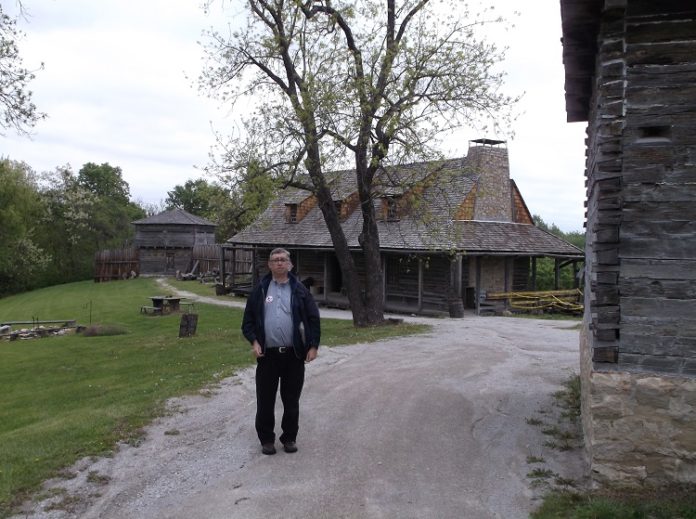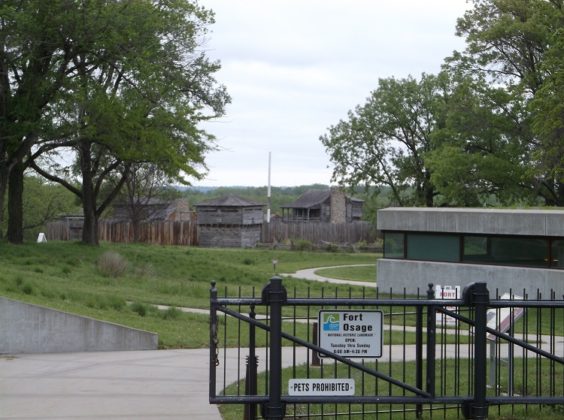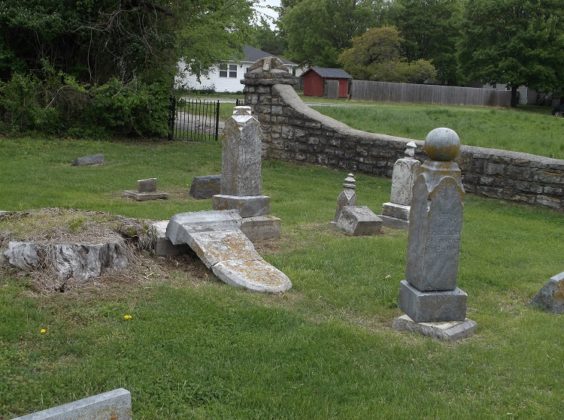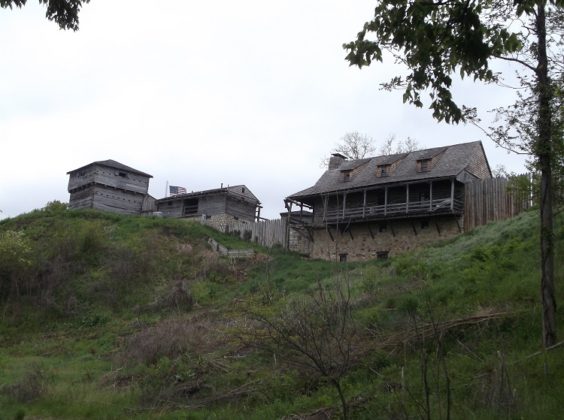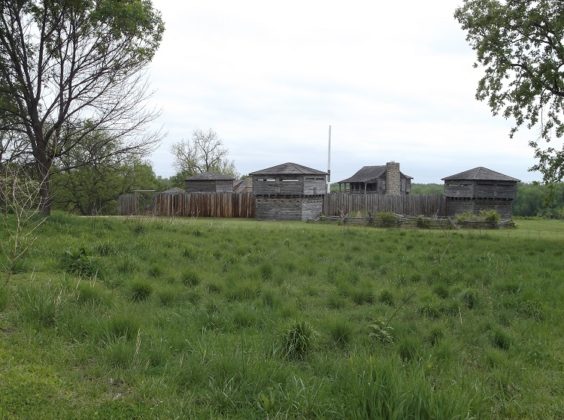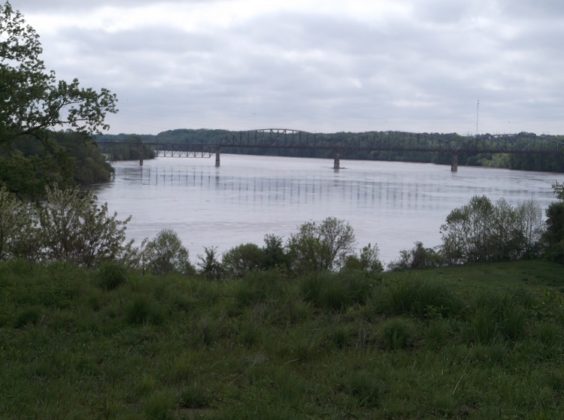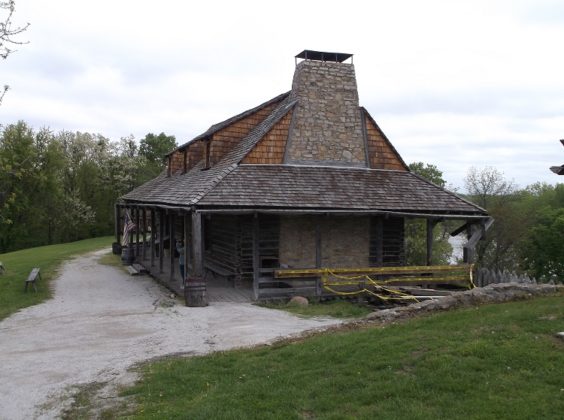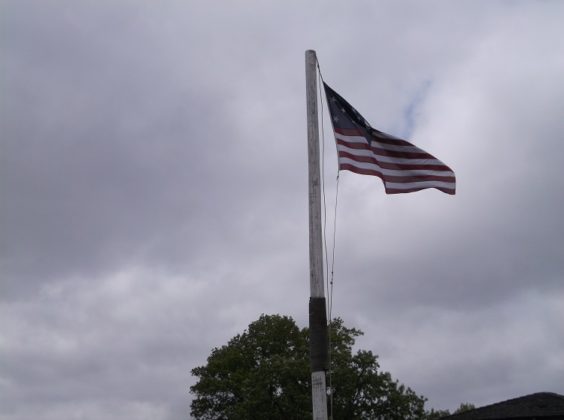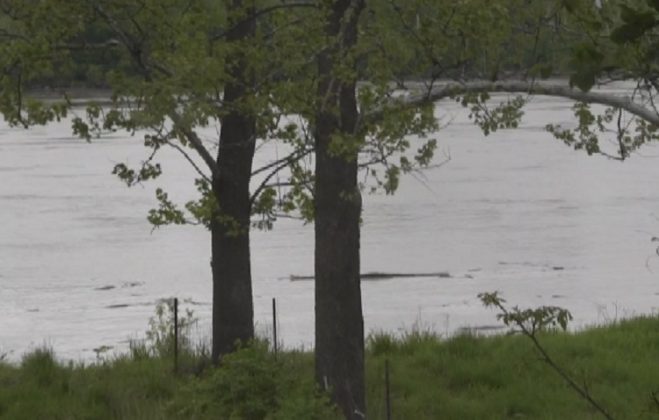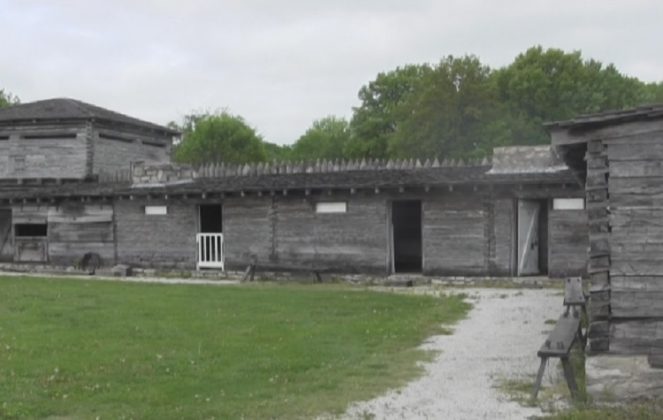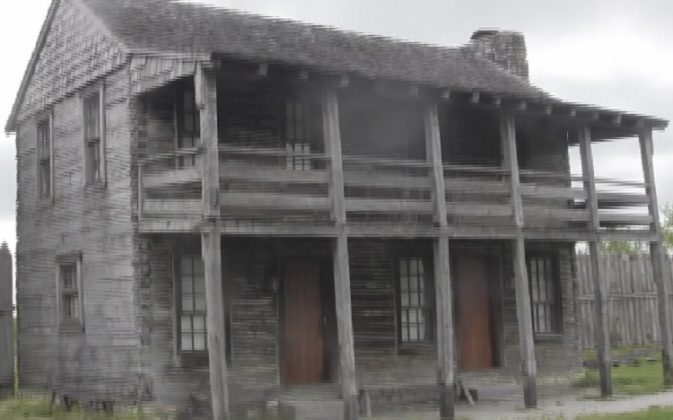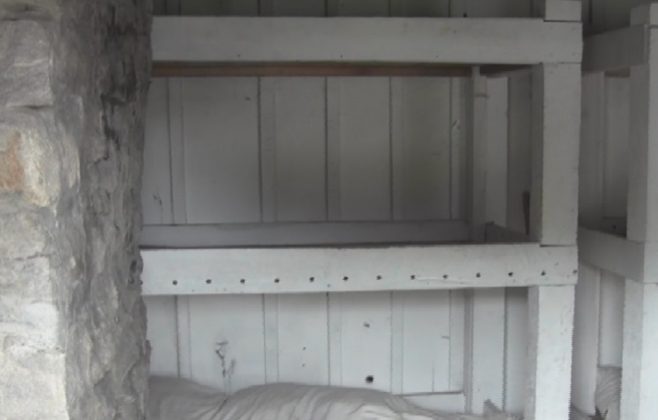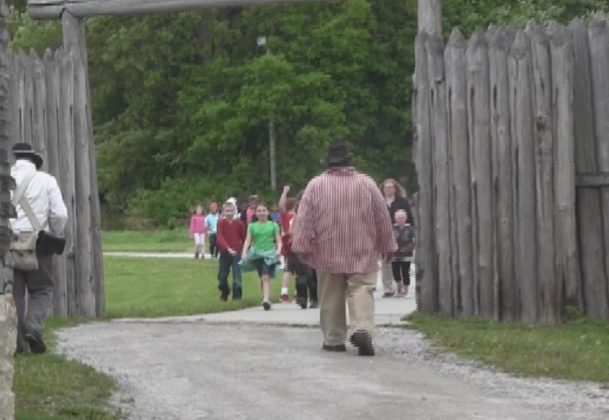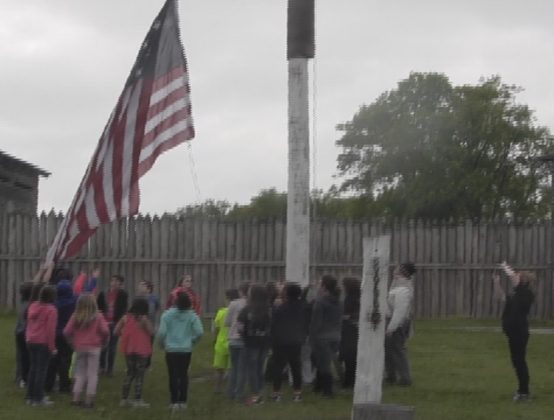I will pick up my story like Homer, in the middle of things. After our overnight stay in Kansas City in late April, in a lodge not too far from Randolph, Dan and I headed toward Sibley, a small Missouri town along the Missouri River with a population of nearly 330 people.
Sibley is where Fort Osage is located. It was a long, rural, winding drive over gravel roads and an old expansion bridge to get there. It was amazing that buses could maneuver over these roads and bridge.
I was surprised to see that the post office for the town was located in a temporary building. I tried to get a picture of it, but the batteries I bought at Dollar Tree were not very reliable in my camera.
I had been to Fort Osage at least once in my past and probably twice. The fort looked exactly the same except that they added a education center since my last visit. There was also a “historical” cemetery located close to the Fort. Several houses lined the road going to the fort.
The cost was $8 to get in. The fort is run by Jackson County Parks and Recreation in Missouri.
The self-guided tour started with a video on the history of Fort Osagein the visitation center.
Fort Osage was designed by William Clark of Lewis and Clark fame. He directed the construction, which was started and completed in 1808. The plans for the fort still exist to this day.
The fort served many purposes. It served as an outpost and housed soldiers to guard the new territory. It protected the U.S. Factory Trade House, located in the fort, and helped the government to befriend the Osage Indians. It was one of the few Factory Trade Houses to make money for the government. Lastly, it offered travelers a sanctuary during their travels.
Before the days of railroads, forts such as this were located across the new territory. They allowed explorers and other travelers a place of safety and supplies during their travels.
Initially, there were 77 enlisted men and four officers when the fort opened. Enlisted men usually enlisted for five years and were paid $5 per month. They also received a daily food ration and could work during their time off for the director of the trade house or others and make 10 cents a day for non-skilled labor and 16 cents per day for skilled labor.
Daily rations for each enlisted man consisted of 1.25 pounds of beef or .75 pounds of pork, 18 ounces of bread or flour and one gill of rum or brandy. After each 100 rations, the enlisted men were also issued 100 candles, 2 pounds of soap, 2 quarts of vinegar and 1 quart of salt.
Each officer had his own room while the enlisted men shared a bunk house. During some periods, two men took turns sharing each bunk bed.
The military commander of Fort Osage and the manager of the U.S. Factory Trade House were in constant competition for control of the fort.
During our visit, a group of grade school children came through. Two volunteer men who were dressed in period costumes met them. One-half of the group went on a tour of the fort and buildings while the other group helped to raise the flag for the day.
This flag was called the “Star-Spangled Banner Flag.” It had 15 stars and 15 stripes. It was the last flag to have more than 13 stripes.
The flag that flew at that time the fort was operating was rolled up, and the children helped to unroll it and raise it up the flag pole. After this was done, the other group of children lowered the flag and rolled it up again.
From 1813 until 1815, Fort Osage was evacuated so the soldiers could serve in the war of 1812. Starting in 1822, lobbyists for the traders lobbied Congress to end the factory system, which competed with private enterprise. By 1827 the Fort was closed.
After it was closed, the local residents used the wood from the fort for other building projects. A record of someone who went past the fort site in 1833 stated there were no structures left. Other accounts say this occurred by 1836.
Fort Osage was mostly forgotten about after the soldiers and civilians left. In 1908 the Kansas City Star published a story about the centennial of the fort.
In 1941 interest arose in excavating and reconstructing the fort. In September 1948, Block House Number One was dedicated. In the 1950s and 1960s, the current buildings were completed. Not all of the buildings and the wall were rebuilt. The buildings outside the wall have not been re-built, and a section of the wall is also missing.
I was surprised that the outhouses were not rebuilt mainly as a demonstration of sanitation during the era of the fort.
The same thing happened at Watkins Mill. Everyone seems ashamed of an outhouse now. Even the Fairview United Methodist Church near Perry had one not so long ago, and they tore it down. I found it nostalgic.
The present diameter of Fort Osage is 20 feet shorter than it was originally because of the changes in the path of the Missouri River.
We watched the flag raising and lowering with the children, and the two volunteers gave us some background on the fort. The rest of the time we walked around on our own, searching every inch of the buildings and reading the descriptions by each area of interest.
We took a path down to the river. There had been a lot of rain not long before, and the river was running very fast, with a lot of trees and limbs in it.
Then we returned to the visitation center, which had displays and written history about the fort, the Osage Indians, local plant and animal life, the river, early settlers, Lewis and Clark and other information on the area.
Then we stopped at the historic cemetery not far from the Fort. The stones were in very bad shape. Many of the them had titled in the soft ground, and others had tipped over. The people who mowed the cemetery just mowed over the fallen flat tomb stones. There was also a very large marker commemorating the Santa Fe Trail, which ran past the area.
The marker was installed in 1909 and had a very large part of its bottom left corner broken off. Some of the metal support rods in the middle of the monument were exposed and will rust away after a period of years, causing more damage to the monument. The monument must have been brought in by animals and wagons over frozen ground or somehow taken down the river and then brought up the bank.
After our tour of Fort Osage, we turned our attention to Watkins Mill, which I will talk about in my next installment.




